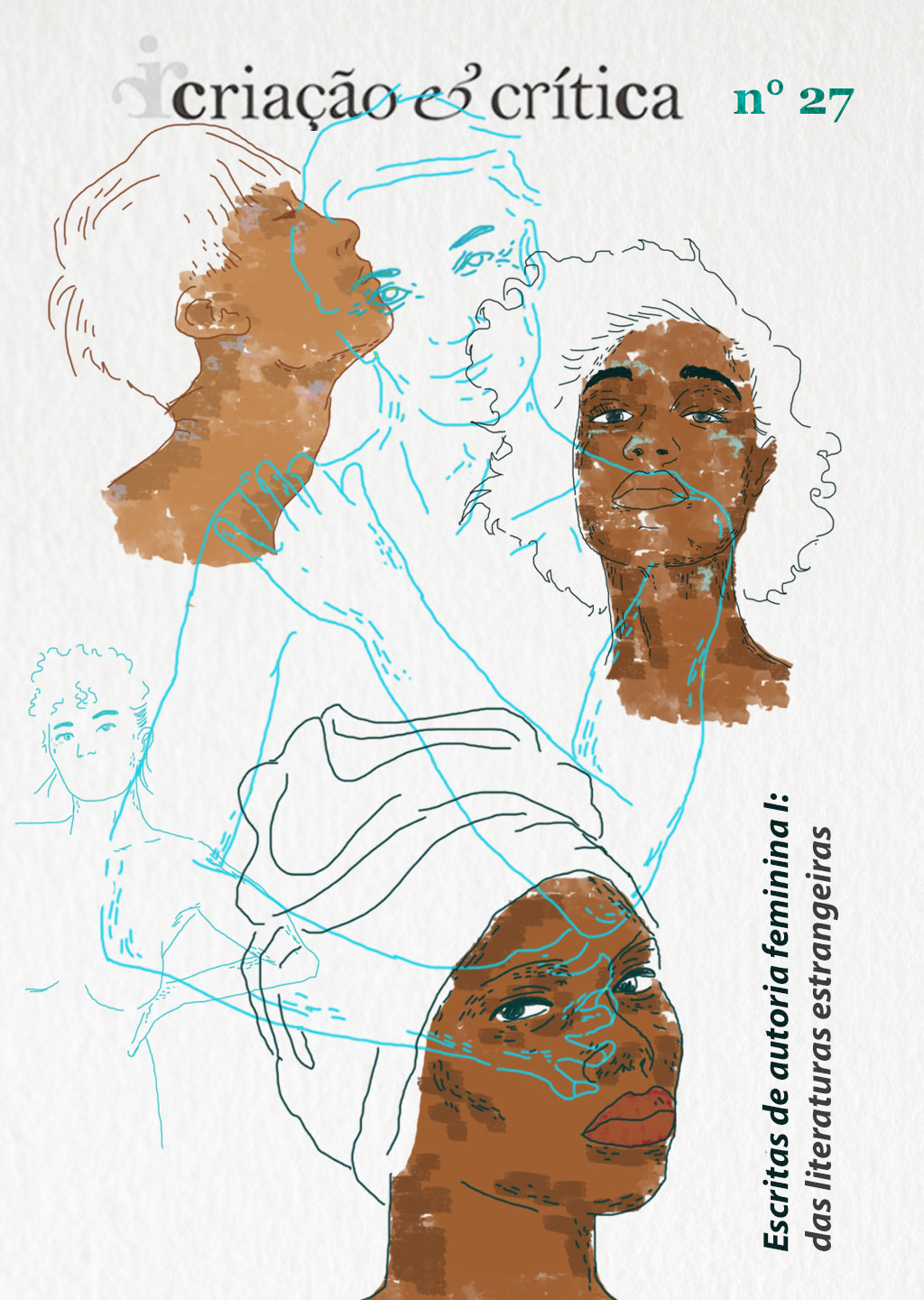Trauma and possibles pathways to healing in The bluest eye: Pecola's story and Claudia's narration
DOI :
https://doi.org/10.11606/issn.1984-1124.i27p139-162Mots-clés :
American Literature, African American Literature, Trauma, Toni Morrison, The Bluest EyeRésumé
The Bluest Eye tells the story of Pecola, a black little girl who undergoes different forms of discrimination and abuse because of the color of her skin. As result of all the pain and suffering—including an incestuous rape—which she is subjected to, the girl loses her sanity. Therefore, one of the objectives of this article is to analyze how trauma is portrayed in the novel, considering the many micro-aggressions which Pecola is exposed to and which result in insidious
##plugins.themes.default.displayStats.downloads##
Références
BRISON, S. “Trauma Narratives and the Remaking of the Self.” In: BAL, M.; CREWE, J.; SPITZER, L. Acts of Memory: Cultural Recall in the Present. Lebanon: University Press of New England, 1999, p. 39-54.
BROWN, L. “Not Outside the Range: One Feminist Perspective on Psychic Trauma”. In: CARUTH, C. Trauma: Explorations in Memory. Baltimore: The Johns Hopkins University Press, 1995, p. 100-112.
CARUTH, C. Trauma: Explorations in Memory. Baltimore: The Johns Hopkins University Press, 1995.
CARUTH, C. Unclaimed Experience: Trauma, Narrative, and History. Baltimore: The Johns Hopkins University Press, 1996.
CRAPS, S. Postcolonial Witnessing: Trauma Out of Bounds. London: Palgrave Macmillan, 2013.
DEGRUY, J. Post Traumatic Slave Syndrome: America’s Legacy of Enduring Injury and Healing. Milwaukie: Uptone Press, 2005.
FREUD, S. The Complete Writings (Arthur Wallens Classics). A.W. Books, 2006, Kindle Edition.
HOOKS, b. Ain’t I a Woman: Black Women and Feminism. Abingdon: Routledge, 2015.
Imitation of Life. Dir. John M. Stahl. Screenplay by William Hurlbut. Universal Studios, 1934. Film.
MALMGREN, C. “Texts, Primers, and Voices in Toni Morrison’s The Bluest Eye”. In: BLOOM, H. Bloom’s Modern Critical Interpretations – Toni Morrison’s The Bluest Eye – Updated Edition. New York: Infobase Publishing, 2007, p. 145-158.
MORRISON, T. The Bluest Eye. New York: Vintage Books, 1999.
MORRISON, T. Playing in the Dark. New York: Vintage Books, 1993.
MORRISON, T. “Toni Morrison Talks About Her Motivation For Writing”. Online video clip. Youtube. Youtube, 2008. Available at <https://www.youtube.com/watch?v=_8Zgu2hrs2k>. Accessed on June 24th, 2020.
MOSES, C. “The Blues Aesthetic in Toni Morrison’s The Bluest Eye”. In: BLOOM, H. Bloom’s Modern Critical Interpretations – Toni Morrison’s The Bluest Eye – Updated Edition. New York: Infobase Publishing, 2007, p. 125-144.
NEAL, L. “The Black Arts Movement”. The Drama Review: TDR, Cambridge, Vol. 12, No. 4, p. 28-39, 1968.
PALMER, C. “Civil Rights Movement, U.S.”. In: PALMER, C. Encyclopedia of African-American Culture and History. Farmington Hills: Thomson Gale, 2006, p. 417-478.
RAMBSY II, H.; SMETHURST, J. “Reform and Revolution, 1965-1976: the Black Aesthetic at Work”. In: GRAHAM, M.; WARD, J. The Cambridge History of African American Literature. Cambridge: Cambridge University Press, 2011, p. 268-287.
RUCKER, W. “Black Power”. In: ALEXANDER, L.; RUCKER, W. Encyclopedia of African American History. Santa Barbara: ABC-CLIO, 2010, p. 662-664.
TASSO, T. Gerusalemme Liberata. Scotts Valey: CreateSpace, 2015.
VISSER, I. “Decolonizing Trauma Theory: Retrospect and Prospects”. In: ANDERMAHR, S. Decolonizing Trauma Studies: Trauma and Postcolonialism. Basel: MDPI, 2016, p. 7-23.
VISSER, I. “Trauma theory and postcolonial literary studies”. Journal of Postcolonial Writing, Abingdon, v. 47, n. 3, p. 270-282, 2011.
WERRLEIN, D. “Not so Fast, Dick and Jane: Reimagining Childhood and Nation in The Bluest Eye”. In: BLOOM, H. Bloom’s Modern Critical Interpretations – Toni Morrison’s The Bluest Eye – Updated Edition. New York: Infobase Publishing, 2007, p. 193-208.
WHITEHEAD, A. Trauma Fiction. Edinburgh: Edinburgh University Press, 2004.
Téléchargements
Publiée
Numéro
Rubrique
Licence
(c) Copyright Rosana Ruas Machado Gomes 2020

Ce travail est disponible sous licence Creative Commons Attribution - Pas d’Utilisation Commerciale - Partage dans les Mêmes Conditions 4.0 International.
Les auteurs qui publient dans cette revue acceptent les termes suivants :
- Les auteurs conservent le droit d'auteur et accordent à la revue le droit de première publication, avec le travail sous la Licence Creative Commons Attribution qui permet le partage du travail avec reconnaissance de l'auteur et de la publication initiale dans cette revue scientifique.
- Les auteurs sont autorisés à assumer des contrats supplémentaires séparément, pour une distribution non exclusive de la version de la contribution publiée dans cette revue (par exemple, publication institutionnelle ou en tant que chapitre de livre), avec reconnaissance de la publication initiale et originale dans cette revue.
- Les auteurs sont autorisés et encouragés à publier et distribuer leur travail en ligne (par exemple auprès de leurs institutions ou sur leur page personnelle) à tout moment avant ou pendant le processus éditorial, car cela peut générer des échanges académiques productifs, ainsi qu'une croissance de l'impact et de la citation de l'article publié (Voir The Effect of Open Access).



